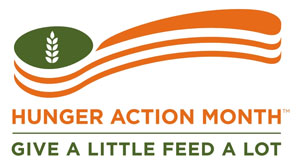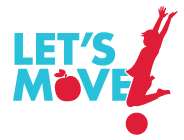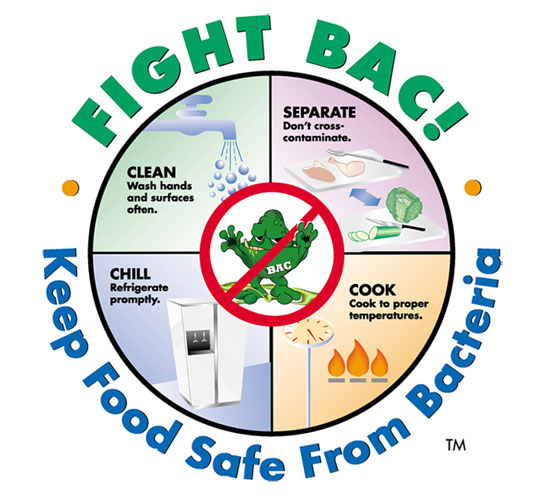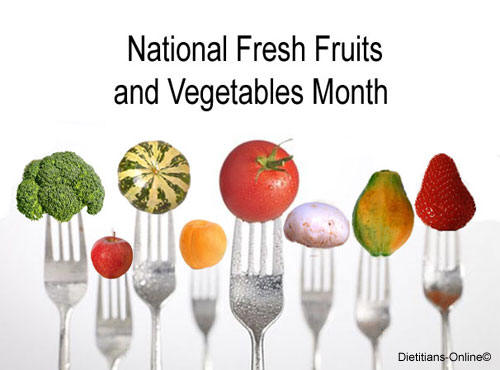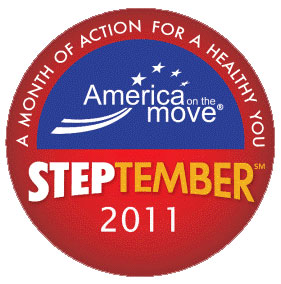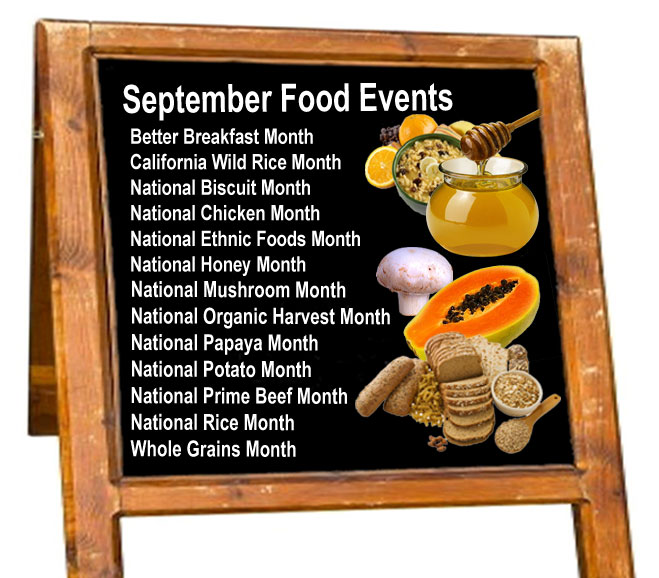|
September
Events, Celebrations and Resources Weekly and Daily Events can be found in the Wellness Newsletter. |
Hunger Action Month
Better Breakfast Month
America on the Move
Go Wild During California Wild Rice Month
Great American Low-Cholesterol,
Low-Fat Pizza Bake Month
Family Meal Month
National Biscuit Month
National Chicken Month
National Cholesterol Education Month
National Coupon Month
National Ethnic Foods Month
National Honey Month
National Mushroom Month
National Organic Harvest Month
National Papaya Month
National Potato Month
National Prime Beef Month
National Rice Month
Whole Grains Month
National Yoga Month
Healthy Aging Month
Mold Awareness Month
Sports and Home Eye Health & Safety Month
Backpack Safety America Month
Attention Deficit Hyperactivity Disorder Month
Baby Safety Month
Childhood Cancer Awareness Month
Gynecology Cancer Awareness Month
National Recovery Month
National Atrial Fibrillation Awareness Month
National DNA, Genomics, & Stem Cell Education Month
National Menopause Awareness Month
National Ovarian Cancer Awareness Month
National Prostate Cancer Awareness Month
National Sickle Cell Awareness Month
National Skin Care Awareness Month
Newborn Screening Awareness Month
Leukemia and Lymphoma Awareness Month
National Preparedness Month
Be Kind to Editors and Writers Month
International Update Your Resume Month
Responsible Dog Ownership Month






















